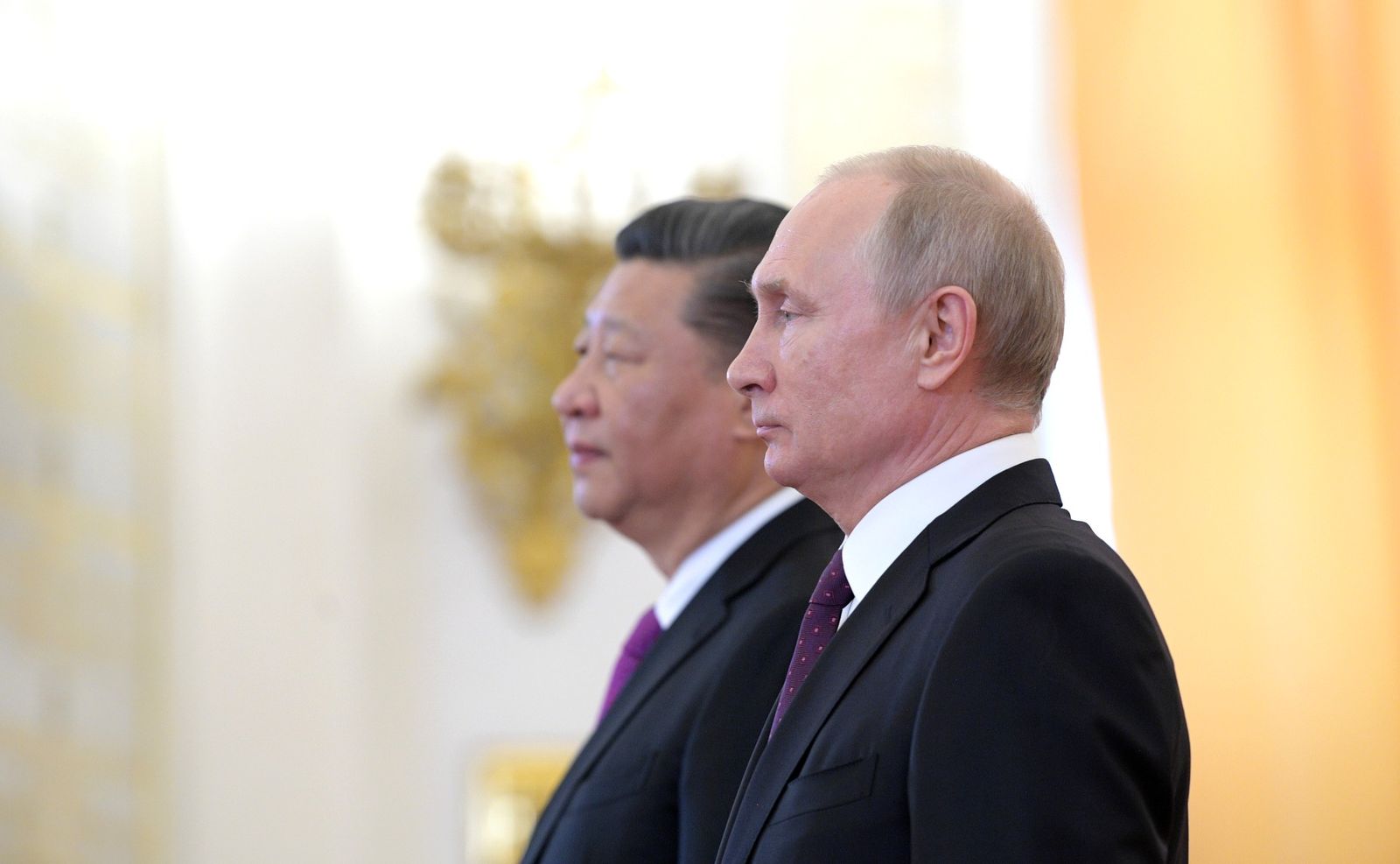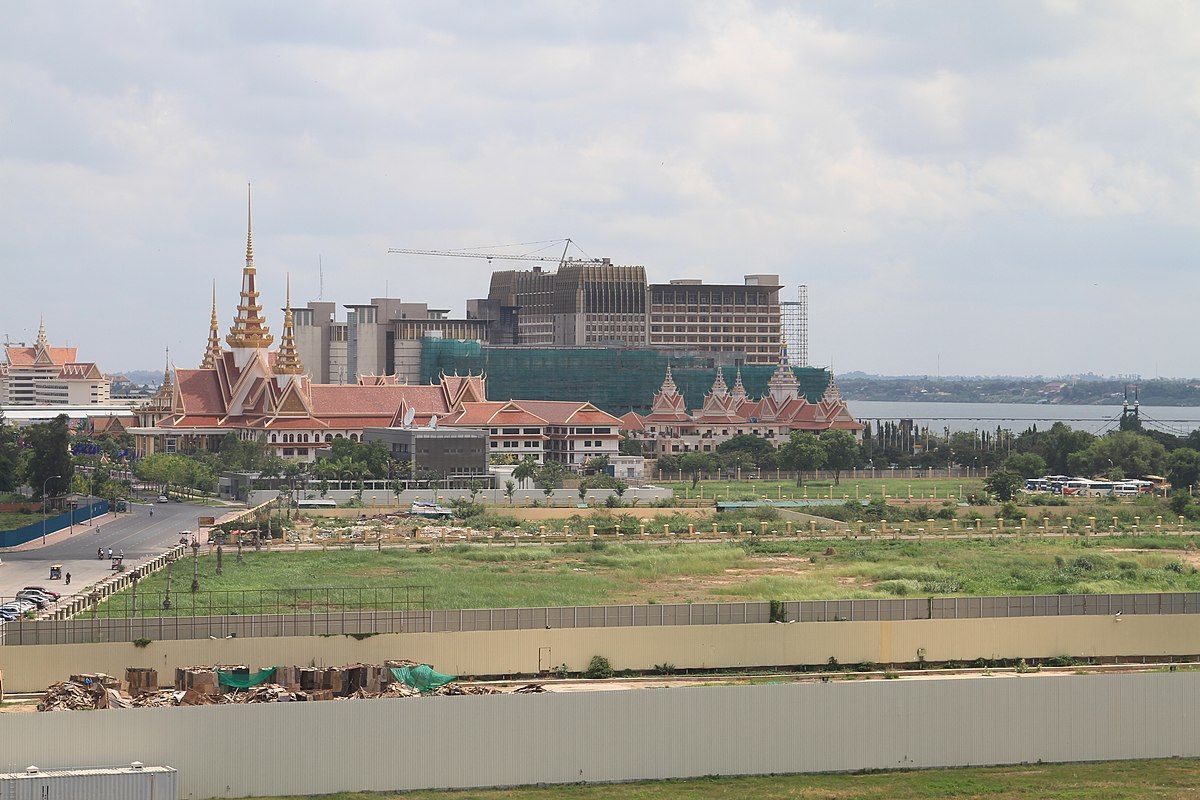Dário K. Moreira is a graduate candidate in Contemporary Chinese Studies at the University of Oxford. He specializes in Chinese and East Asian foreign policy. He has previously researched the Sino-Filipino dispute for which he received the “Golden Stork Award” from the University of Leiden.
Dongguan, Guangdong Province, China. An inconspicuous city serving as the home for nearly 9 million Chinese citizens. Beneath it, however, lies the Chinese Communist Party’s (CCP) latest governance experiment: The Stability Maintenance’s Grid System. This prefecture-level city hosts 33 Stability Maintenance Centers in its 28 townships and four sub-districts. All 592 villages and communities in the city have their Workstation of Stability Maintenance, which reports to their respective Centers. Further even, these 592 Workstations are subdivided into 3106 neighborhood-level Grids, with 8314 Grid managers–who “monitor and report irregularities to the Centers.”
This puts the ratio of CCP officials to Dongguan’s population at 1:1000–meaning the CCP as an institution can personally know the whole of the 9 million residents. In addition to its spatial ubiquity, Centers are also temporally ubiquitous. Centers, Workstations and Grids assign staff to serve “24-hour duty assignment[s] and immediately report any emergency to their superior, who then is required to return to the office at once to handle it." In brief, 9 million citizens have been sliced up into increasingly smaller administrative units–all of which are supervised by CCP members, 24-hours a day, seven days a week.
This impressive institutional web has been set up under the guise of Stability Maintenance–a policy principle which establishes minimizing public unrest as one of the Party-State’s primary governance goals. This is to be achieved not through coercion, but law. By making it a priority to “maintain stability by law,” the CCP is reshaping not only its legal Party-State institutions, but also the role of law in a society. This system raises various questions. Why was it set up in the first place? Is it a power-grabbing move by the CCP, or does it serve other societal purposes? What consequences will this system have? Does it cripple the rule of law? Can it really decrease public unrest?
The Backdrop of the Stability Maintenance Mechanism
The stability maintenance must be understood against the backdrop of a rising public unrest reflected in the number of protests and crime. Furthermore, the stability maintenance is the CCP’s response to the limited effectiveness of the measures put in place to mitigate those trends, namely higher public security budgets.
As the economic growth rate of the Chinese economy slowed during the 1990s, the frequency of yearly mass protest incidents increased, quadrupling in a span of seven years from ten thousand to forty thousand. More recent figures estimate that, as of 2010 (the last year with publicly available data), there were over 180 thousand mass incidents. This increase has led to a general acknowledgement by the Party-State leadership that “moderate levels of protest are probably inevitable.” As such, the Party-State has devised new policies to mitigate the impact of these inevitable protests.
The first strategy, increasing public security budgets, had limited effect. In part as a result of China’s explosive economic growth, China’s budget for internal security grew exponentially since the 1990s. The security budget for institutions such as the People’s Armed Police (PAP) saw a ten-fold increase in the share of the security budget from 0.5 percent to 5 percent. Comparatively speaking, however, China’s internal security budget is low. China’s internal security budget per capita in 2013 was a fifth of the United States’ and staffed less police officers per 100,000 people than Norway or Finland, debunking any notions of a totalitarian police state.
Ultimately, these budget increases had limited effectiveness. In 1996, legal scholars Situ Yingyi and Liu Weizheng interviewed a series of Chinese citizens to scrutinize the effectiveness of the Social Stability project. They actually found an increase in public disorder, such as violent crime, organized crime and white-collar crime. More recent studies paint a similar picture. In 2013, Chinese Professor Yue Xie found that social stability maintenance through public security is ineffective “particularly in the poorer central and western regions.” In fact, despite public security spending surpassing the national defense budget in 2011, criminal cases increased.
There is a good deal of evidence to suggest that the CCP’s leadership recognized the ineffectiveness of this policy strategy and, subsequently, devised a new one. In 2012, the CCP hosted its 18th National Party Congress, the Party’s biggest gathering which takes place every five years. In addition to appointing Xi Jinping as the new General Secretary of the CCP, the Congress wrote a paper where it referred to the four main threats to its subsistence. The most relevant for this article is the following: “insufficient understanding of the masses.” In other words, the party’s conclusion was that mounting public unrest was the result of its own detachment from the Chinese population. Contact with the grassroot levels of the population thus became a priority for the Party State.
In short, the Stability Maintenance Mechanism is best understood against the backdrop of three factors: the increasing levels of public unrest in Chinese society, the inefficacy of increases in the public security budget, and the CCP’s own sense of divorce from the masses.
The Stability Maintenance Mechanism in Practice
The main goals of the Stability Maintenance Mechanism are far-ranging: “the protection of political security, public security and production safety.” It is crucial to bear in mind that the institutional web is only a fragment of the policy reforms established to reach these goals, which encompass the court system, the police and party-institutions. The grid system in Dongguan, however, is an intriguing case as it reveals both the Party’s incredible efforts to reach the general population, as well as what it means to “maintain stability by law” in practice.
The issues that the Stability Maintenance Centers deal with are strikingly mundane, thereby aiding the Party’s prevention of escalations from localized discontent to collective public unrest. The four most common issues in Centers are feud warfare, economic disputes, land disputes, and unanticipated triggering events, such as infrastructure problems at the neighborhood-level. In Huojie township of Dongguan, for instance, grid managers were crucial in finding 61 illegal tenants by detecting anomalies in water consumption.
The focus on the mundane reveals exactly how seriously the CCP is taking to understand the masses. Moreover, by focusing on small-scale issues, the stability maintenance mechanism gains a preemptive role, as it addresses concerns before they escalate to bigger upheavals.
Informal mediation is the norm for conflict resolution, with court litigation being used only as a last resort. In other words, Party institutions actively avoid using the law, i.e. prioritize satisfying the local population over following the law. Party members report any incidents to the Center during their regular meetings, and the Center subsequently relays that information to the Party committee and the government at the same level (for instance, township-level). Using the whole network of Centers, Workshops and neighborhood Grids, a six-stage process of gradually increasing hierarchy connects disputes on the spot to the director of the local Comprehensive Management Committee and, finally, to court adjudications.
These Centers have a direct link to the very leadership of the CCP, meaning the nature of these mundane issues can be directly communicated to the Party’s highest governing bodies. The anecdote about the 61 high-water-consuming illegal tenants could, in theory, reach Xi Jinping himself (albeit through a seven-step chain). Ultimately, however, the establishment of such grassroot-level institutions has created a highly fragmented system. This fragmentation leads to a highly ad hoc system, where legal implementation is highly informal and contextual: laws are implemented through different means in different places depending on the specific context.
Hong Kong based Professor Feng Chen terms this the “local state adhocracy.” This is such a characteristic feature of legal implementation, that Chen argues it is a “mode of governance” as opposed to “a collection of simple task-force groups.” Underpinned by a vast array of networks informal and informal, it serves the primary goal of conflict management and is led by the Party.
Pleasing the Masses or Undermining the Rule of Law?
Evaluations of this system’s effectiveness often frame the assessment in terms of the regression of the rule of law. Jontahan Benney, Professor at Monash University, notes how the increasing practice of such ad hoc systems have led to dispute mechanisms “being influenced and facilitated by the discourse and practice of stability maintenance, rather than legal methods and traditional mediation processes.”
Chen makes a similar argument when he says that the adhocracy “weakens the rule of law and institutionalization.” He further notes that these new arrangements have had counterproductive effects on “judicial proceedings for conflict resolutions.” These adhocracies promote quick fixes, as opposed to slower deliberative judicial procedures, thereby “weaken[ing] the legitimacy of the judicial system.” The ubiquity of this informality is seen as a regression in China’s legal development.
However, such value judgements detract from the goal of this system, which is not to advance the rule of law, but to decrease public discontent. In fact, Chen acknowledges this when he emphasizes that these systems have “provided alternative avenues for the redress of grievance and dispute resolution.” The case study of Dongguan suggests that, in that regard, the adhocracy system is actually highly successful.
Dongguan reports that between 2009 and 2015, it solved 63 thousand disputes and increased the success rate of mediation from 43 percent to 95 percent. In addition to this, crime rates have decreased significantly in both cities–signifying that the Maintenance Stability Mechanism is mitigating the rising numbers alluded to in the beginning of this essay. The success of these measures is also seen in the introduction of new initiatives with the goal of advancing social stability. Starting in 2015, Dongguan in Guangzhou introduced “Peace Promoting Committees,” which aim to mobilize grassroots citizens. As of 2019, 33 such committees had been established, covering all townships and subdistricts of the city.
The first Stability Maintenance Center was established in 2009 in the province of Guangdong. Huang Huahua, then governor of the province said that its goal was twofold: “to solve various difficult problems caused by the insufficiency of the previous system in dealing with the increasing number of conflicts and enhance grassroots Party committees.” This system was so successful that by April 2010 all 1630 townships and sub-districts in Guangdong had a Center.
In the context of the Chinese Communist Party, law is a tool of governance which supports the leadership’s goals, not an independent judicial power. Following increases in public unrest, the Party has devised a strategy for maintaining social stability by law. The Centers offer a mixed bag. Whilst establishing a platform for local grievances to be voiced and heard, it also extends the Party’s power to an unprecedentedly insular extent. As such, the Centers in China’s Guangdong province are a sobering reminder of the Western origins of the Rule of Law.
Cover Image: "Guancheng District, Dongguan" by David in May 2019, under CC-4.0.




